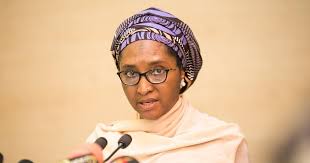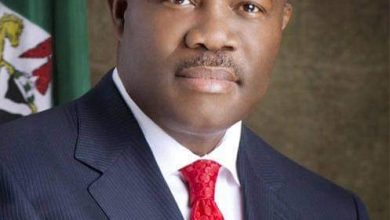Nigeria Economic Outlook 2022: Navigating Stormy Seas

Global: Broad-based growth seen in 2021
The global economy continued its post-pandemic recovery in 2021, with the continued rollout of vaccines and accommodative monetary and fiscal policies. However, most developed countries hit a soft patch from Q3-2021 due to a number of factors. To begin with, the arrival of more transmissible coronavirus strains (most notably Delta and Omicron) pressured consumer spending. Furthermore, as the economic rebound strengthened, government intervention and other stimulus packages decreased. Rising inflationary pressures also caused significant constraints across countries. For instance, US Consumer prices rose by 7.0% in Dec-2021, the highest estimate in three decades, with the US Federal Reserve acknowledging the persistent inflationary pressures and commencing asset purchase tapering before the end of the year. The post-pandemic acceleration in inflation appears to be distinct from previous inflation episodes, as it stems from pandemic-led supply chain disruptions. This will largely determine policy direction across global economies in 2022, which will likely be a year of policy normalisation.
The divergence in global growth is another key theme from 2021. In our mid-year economic outlook report, “Walking a Slippery Slope”, we highlighted that economic growth across countries would be uneven due to the differing wealth of nations. The forecast that more affluent countries would recover stronger from the pandemic never appeared more accurate, thanks to a confluence of factors, including varying levels of vaccine access and accommodative fiscal and monetary policies. While our outlook for developed economies remains strong, we expect output in emerging markets to be more divergent, as inflationary pressures coupled with other fiscal imbalances and potential monetary and fiscal responses to central banks in advanced economies make for a tricky balancing act in 2022. Overall, the IMF expects sustained expansion for EMs in 2022, projecting modest output growth in Brazil (+1.5%), South Africa (+2.2%) and Russia (+2.9%).
Despite the challenges faced in 2021, we expect reduced restrictions, high vaccination rates, improved household incomes and robust foreign demand to sustain growth in 2022. Unsurprisingly, the International Monetary Fund (IMF) projects global GDP to expand by 5.9% in 2021 and expects further expansion of 4.9% in 2022. The Washington-based body forecasts growth across all regions, albeit to varying degrees. Advanced Economies are expected to grow by 5.2% in 2021 and 4.5% in 2022. Also, IMF forecasts the Euro Area to expand by 5.0% in 2021 and 4.3% in 2022. The SSA region’s recovery is expected to lag behind other regions, growing by 3.7% and 3.8% in 2021 and 2022, respectively.
Sub-Saharan Africa: A patchy road
Sub-Saharan Africa (SSA) has broadly regained ground after contracting in unprecedented fashion in 2020. The IMF estimates real GDP growth at 3.7% y/y in 2021. During the year, the easing of movement and travel restrictions around the globe supported tourism recovery in SSA and drove demand for critical exports. The region’s growth pillars recovered from 2020’s slump, with the Bloomberg commodities index, which includes crucial SSA exports such as crude oil, natural gas, copper, and coffee, gaining 28.2% after contracting by 3.5% in 2020. Improvements in global trade and favourable financial circumstances also supported economic recovery for African countries.
In terms of the pandemic, there is a lot to be desired. As expected, the vaccine rollout in SSA has been the slowest globally, leaving the region vulnerable to repeated waves of Covid-19. Only c.9.2% of the African population were fully vaccinated as of 31-Dec-2021, well below the c.48.5% global figure. Although the world administered around 9 billion doses in 2021, it will likely take years before the majority get vaccinated in Sub-Saharan Africa. Additionally, the discovery of the Omicron variant in South Africa, and the reaction of developed countries in banning travel from Southern Africa, highlight the perennial threat of the pandemic – prolonged foreign travel restrictions still pose downside risks to investment and business continuity.
The IMF expects regional growth at 3.8% in 2022. However, the recovery remains modest by global standards, expanding the income disparity with developed economies. For context, the fund expects growth in Advanced Economies and Emerging Economies to print at 4.5% and 5.1%, respectively. Given SSA’s diversified economic structures, we believe modest regional growth will be maintained as robust expansion in high-performing nations, including Ghana, Ivory Coast, Kenya, Senegal and Rwanda, offsets tepid performance in others. However, sluggish oil production in Nigeria and socio-economic vulnerabilities in South Africa will likely weigh on growth in West Africa and Southern Africa in 2022. Furthermore, conflict in Ethiopia, Jihadist terrorism in Niger and Mali, and terror attacks in Uganda pose significant threats to the business environment, with potential spillover effects.
Ghana: Regaining momentum
Ghana’s economy has regained momentum following the pandemic and a drop in oil prices, which produced the country’s first recession since 2007 (real GDP contracted by -5.7% y/y in Q2-2020 and -3.2% y/y in Q3-2020). In 2020, real growth slowed to 0.4% compared to an average of 6.6% between 2010 and 2019. In the first three quarters of 2021, growth was robust at 3.1% y/y, 5.1% y/y, and 6.6% y/y, respectively. The IMF expects a 4.7% y/y growth for FY-2021. So far, the revival of the services sector and higher commodity (cocoa and oil) prices have powered the 2021 rebound.
Ghana’s fiscal deficit and concerns about debt sustainability continue to cloud the bright economic outlook. The overall public debt stock climbed to 77.8% of GDP in Sep-2021, up from 76.0% in Dec-2020. According to the Ministry of Finance, the budget deficit in 2021 would contract to 9.4% of GDP, from 11.7% in 2020. The IMF anticipates that the overall balance will fall to -14.5% of GDP in 2021 from -15.7% in 2020. The decrease reflects a rebound in tax receipts due to economic recovery and the phase-out of pandemic-related assistance. In the first nine months of 2021, external sector developments showed a reduced trade surplus, and increased investment income outflows continued to weigh on the current account balance.
Nonetheless, we expect growth to print at 4.5% in 2021 and continue unchallenged in 2022, contingent on a free flow of economic activities and sustained export growth from key exports, cocoa, gold, and oil. The significant downside risks include a re-emergence of Covid-19 and the expected normalization in monetary policy in the US.
Ivory Coast: Demonstrated resilience portends sustained growth
Ivory Coast has demonstrated robust resilience in the face of the pandemic. Since the 2011 post-election crisis, the country has been one of the stellar performers in SSA, averaging 8% growth in real terms between 2012 and 2019 while SSA’s average growth between the period prints at 2.6%. In 2020, growth slowed to 1.8%, due to the impact of Covid-19 on key export sectors of the economy. Election-related violence in 2020 also contributed fairly to the slowdown. Albeit the country was among the few Sub-Saharan African economies to expand in 2020.
So far, the leading economy in the WAEMU has exhibited relatively strong resilience in the face of pandemic-related shocks. In 2022, we expect a return to steady, high growth, driven by strengthening domestic demand and easing political tensions. Our optimism on the economy is also hinged on the track record of growth recorded under the current administration’s tenure since 2012, the vote of confidence from international investors through the oversubscribed Eurobond issues, and the relative resilience of the economy. Nevertheless, the rebound is dependent on navigating the pandemic effectively (only 8.0% of the population has been vaccinated as at Dec-31,2021). The country also needs to reduce dependence on commodities, particularly soft commodities which accounts for a high concentration of its export base.
Looking ahead, the implementation of the National Development Plan (PND) 2021–25, which aims to maintain a stable sociopolitical environment and increase the mobilisation of domestic resources, is crucial. Meticulous implementation of the PND is crucial for the Ivorian recovery cycle, as the country targets average growth of 7.7% during the period. The government plans to increase the investment rate from 23.1% of GDP in 2021 to 27.1% by 2025. In the PND, the fiscal authorities are seeking to narrow the budget gap to 3% of GDP in 2023, we expect medium-term growth to be driven by enhanced fiscal revenues, which currently compares unfavourably with SSA peers.
Nigeria: A return to slow and sluggish growth
In the absence of lockdown measures in 2021, the Nigerian economy recovered significantly from the recession and low output growth in 2020. In real terms, Gross Domestic Product (GDP) grew by 0.5%, 5.0% and 4.0% in Q1-2021, Q2-2021 and Q3-2021 respectively compared to estimates of 1.9%, -6.1% and -3.6% in Q1-2020, Q2-2020 and Q3-2020. Inflationary pressures persisted in Q1-2021, with Consumer Price Index (CPI) reaching a record high of 18.2% y/y in Mar-2021. However, the pressures simmered by the end of H1-2021, and inflation began to take a downtrend as the high base impact from 2020 kicked in. The recovery process persisted despite the emergence of new Covid-19 variants. The government continued its solid fight against the outbreak, creating awareness and improving vaccination levels, supported by donations. However, only 2.8% of the Nigerian population received the first dose of the Covid-19 vaccines as of Dec 31st, while 2.1% have completed the second dosage (full vaccination), bringing the total of vaccinated citizens (with at least one dose) to 4.9%.
As a result of the continuous economic recovery, monetary policy easing was essentially non-existent throughout the year. Also, given the impact on the cost of its liquidity mop-ups (via OMO auctions) and the cost of credit in the debt market and the banking sector, the Central Bank of Nigeria (CBN) was hesitant to raise policy rates, especially as the disinflationary trend continued. On the flip side, the foreign exchange market was quite active, with the Central Bank imposing several policies and operations in the Eurobond space, which helped improve Foreign Exchange (FX) reserves and created a lot of volatility in the FX market.
Overall, we expect multiple factors to shape the economy’s direction in 2022. To mention a few, we expect electioneering activities and the potential removal of fuel subsidy to be key drivers of implementing economic policies, coupled with economic fortunes regarding inflation and monetary policy. We project economic growth of 1.6% y/y, buoyed by a decent recovery in the oil sector from a two-year-long recession, as an increase in the Organisation of Petroleum Exporting Countries (OPEC)’s production quota and the low base effect will drive growth. In addition, we expect sustained growth in the agricultural and services sectors, supported by strong demand for food and improved internet adoption amid the roll-out of the 5G network. On price movement, we anticipate inflationary pressures to weigh on the market as the high base effect wears off and the true impact of imported inflation reflects on the headline inflation numbers. As a result of price pressures and policy normalisation in the global economy, we anticipate a hawkish policy tone from the Monetary Policy Committee (MPC).
Naira Assets: A higher yield environment?
The yield environment was an intriguing phenomenon in 2021 as the fixed income market rebounded after record lows in 2020. Our expectation of a rate reversal on the back of tighter system liquidity increased domestic debt financing, and demand for higher rates from private sector money managers materialised. True to our expectations, average yield across the yield curve reversed higher, albeit faster than initially projected in H1-2021. However, yields began to moderate in Q3-2021. The major drivers of the higher yield environment were tighter system liquidity and the government’s reliance on the domestic debt market. In the international debt market, the government issued $4.0bn worth of Eurobond to finance its 2021 budget deficit.
In the equities market, bullish momentum from 2020 was initially carried over into early 2021, as seen in Jan-2021, /m return. However, this was halted by a slowdown in fixed income and treasury maturities, which tightened when the index printed a strong 5.3% m liquidity in the financial system. The story changed in H2-2021 as the downward reversal in the yield environment, caused by the actions of sovereign debt managers to keep borrowing costs manageable, emerged as a tailwind for equities. Higher oil prices and robust corporate earnings growth aided by the 2020 low base effect fueled the rebound, with the NGX-ASI closing the year at 42,716.4 index points with a return of 6.1%, beating our base case expectation of 4.3%. In addition, new tailwinds emerged for large caps, as Airtel Africa Plc (AIRTELAFR) and MTN Nigeria Plc (MTNN), both announced the approval in principle for their payment subsidiaries, SMARTCASH Payment Service Bank Limited and MoMo Payment Service Bank Limited. Despite pressures from weak crude oil production and the threat from the Omicron variant of Covid-19, these tailwinds kept the bourse in the green.
Heading into 2022, our prognosis for the yield environment is that we expect a higher yield curve in 2021, premised on aggressive government borrowing and a hawkish monetary policy. The government plans to borrow N5.2tn from the domestic and international debt market to finance its 2022 budget deficit. Also, policy normalisation in developed markets, depressed FPI flows, and stubborn inflationary pressures are factors that we expect to support a preference for tighter monetary policy.
For the equities market, from our analysis of the current investment and economic climate, we struggle to see significant improvement in investor appetite towards equity instruments in 2022. We expect Foreign Portfolio Investments (FPIs) in equities will remain downbeat given the unrelenting FX debacle, upcoming elections, and volatile macroeconomic environment. Given the expected higher yield environment, we anticipate that this will trigger asset rotation from PFAs, which could depress equity market performance. Thus, we expect to see sell pressures from domestic investors (particularly institutional investors). Despite the sell anticipated pressures during the year, we do not foresee a rout but rather mild bearish sentiments in 2022.






